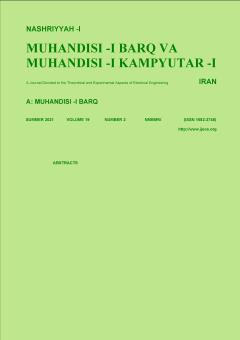-
-
List of Articles
-
Open Access Article
1 - Non-Isolated DC / DC Converter with High Voltage Gain and Appropriate Efficiency in High Transfer Power with New Soft Switching Structure
Omid sharifiyana majid dehghani Ghazanfar Shahgholian S.M. Mehdi Mirtalaei Masoud Jabbari -
Open Access Article
2 - Design and Implementation of Fuzzy Sliding Mode Controller for Motion Control of an Electric Shake Table Using Adaptive Extended Kalman Filter
Nima rajabi Ramazan Havangi -
Open Access Article
3 - A Hybrid Long-Term Probabilistic Net Load Forecasting Approach Considering Renewable Energies Power in Smart Grids
Mohsen Jahantigh majid moazzami -
Open Access Article
4 - Modeling a Proposed Nanoscale SOI-Junctionless for Improvement of Steady-State and Frequency Characteristics
Mohammad Kazem Anvarifard -
Open Access Article
5 - A Frequency-Hopping Based Pulse Width Modulator for Spur Reduction in Switching Buck Converters
Reza Inanlou Omid Shoaei -
Open Access Article
6 - Reduction of Electrical Losses of Flying-Capacitor Modular Multilevel Converter (FC-MMC) in Electric Drive Application
Ahmad Bagheri H. Iman-Eini -
Open Access Article
7 - Improving the Transient Stability of Grid Connected Converter During Severe Voltage Drop by Virtual Impedance
Omid Abdoli E. Gholipour R. Hooshmand -
Open Access Article
8 - Wireless Powered Communication System Design with Nonlinear Energy Harvester
مهرنوش میرحاج مریم مسجدی محمدفرزان صباحی
-
The rights to this website are owned by the Raimag Press Management System.
Copyright © 2017-2026







